|
|
D A N I
E L E S C A R D Ó
d a n i e l @ e s c a r d o . o r g |
|
Sculpture
The trees of
barbarism and twisted towers
Text by Daniel
Escardó
English
Español |
|
The sole
idea of building sculptures in a huge scale, in a format
that is greater than human, that endures the most extreme
weather conditions and lasts through time is fascinating and
common to most sculptors. However, this idea had never moved
me much personally. I had even discarded it, maybe because
it was clear to me how much work was involved in great scale
projects.
In “Objectum” I had worked on perfecting my modelling for
foundry, and small mechanical beings appeared, with mobile
parts. As in previous stages, this was about a system of
compatible parts to build with. A work of utmost patience,
almost labourtherapy. During this stage, I moved the studio
into the kitchen, used the microwave oven for the ceramics,
and I worked while listening to music and cooking; a sort of
technical minimalism.
|
|
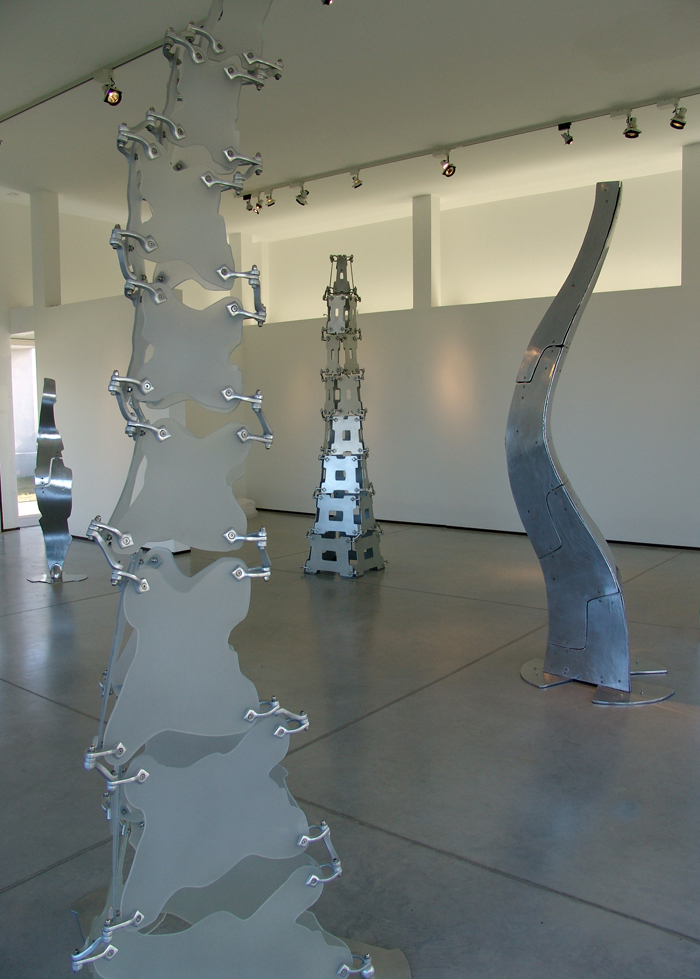 |
|
However, in
February 2005 a friend called from the US with a proposal to
draft a five or six meter terrestrial sculpture. A small
city in the state of Florida, had decided to improve itself
with large sculptures, and was calling for projects. I began
designing immediately and many interesting ideas came up,
but the deadlines were too close and we couldn’t make it. By
then my paintings had moved on considerably; drawings
appeared on the canvasses that were clearly future
materializations in sculpture, so I transferred those
drawings onto my copybooks and opened a parallel research
phase. The idea of building had grabbed me.
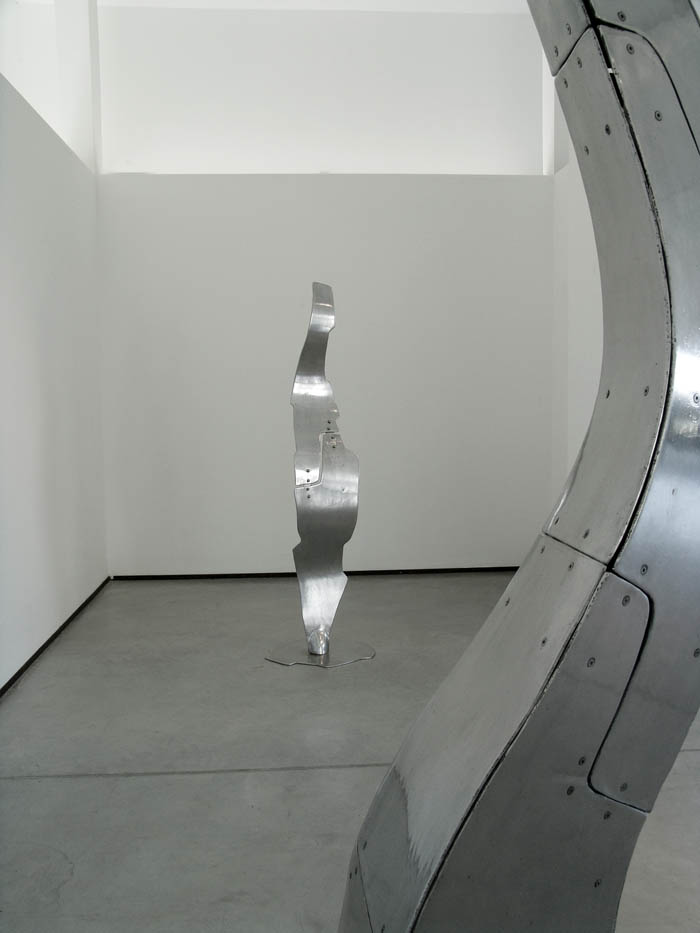 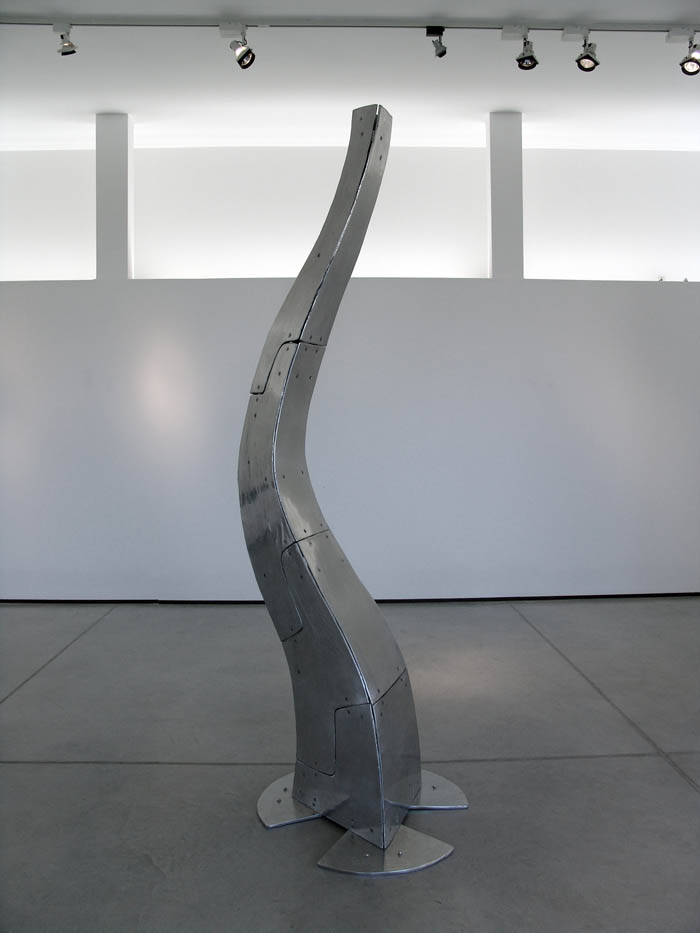
Sinuose 2009
Aluminum casted in soil foundry and stainless steel 32 x 32
x 102 inches
|
|
The first
design that came up was a great obelisc, with a wind-powered
head, a weather vane, a huge weather vane six meters high,
marking the cardinal points and the wind direction; a Gothic
piece with two arms, a tail and a lightning rod at the top.
During all of this first stage, I maintained a constructive
dichotomy between the base and the head of the sculpture. I
tried to build this piece, or at least to find out how to do
it, exchanging ideas with engineers. Somehow I solved most
of the technical and building problems; but the dimensions
overwhelmed me, mainly because there was so little I could
do on my own, and I was still used to resolving my works
personally.
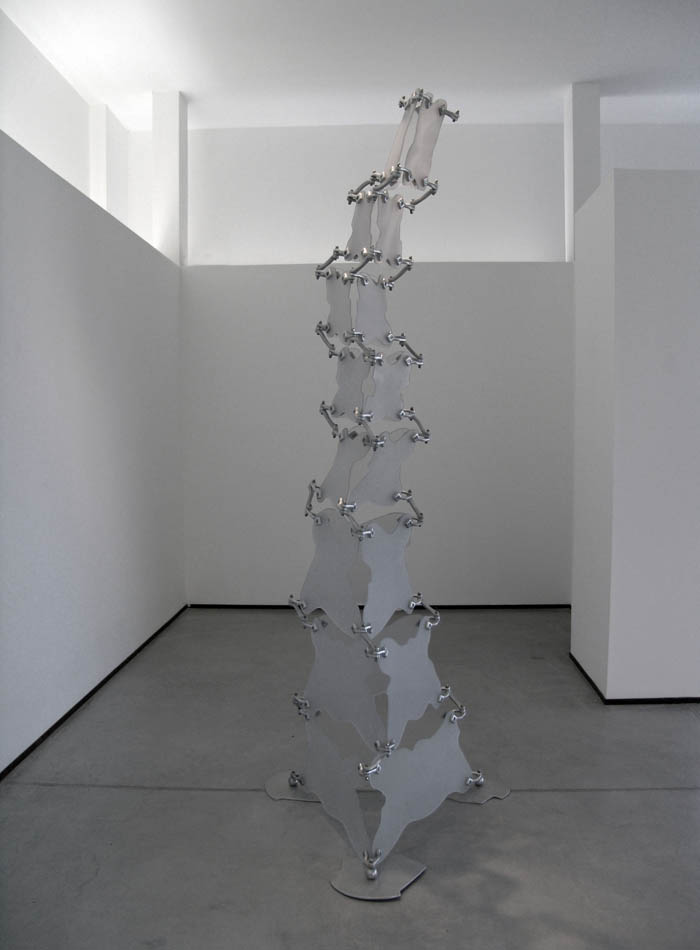 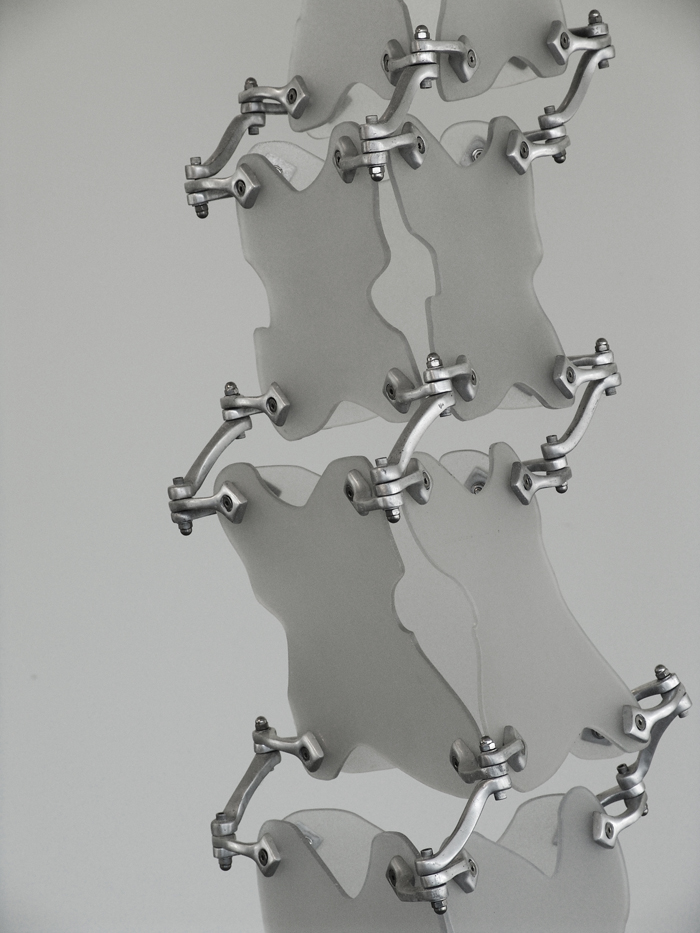
Deconstructa anodized aluminum casted in soil foundry
polycarbonate and stainless steel 40 x 40 x 98 inches 2008
|
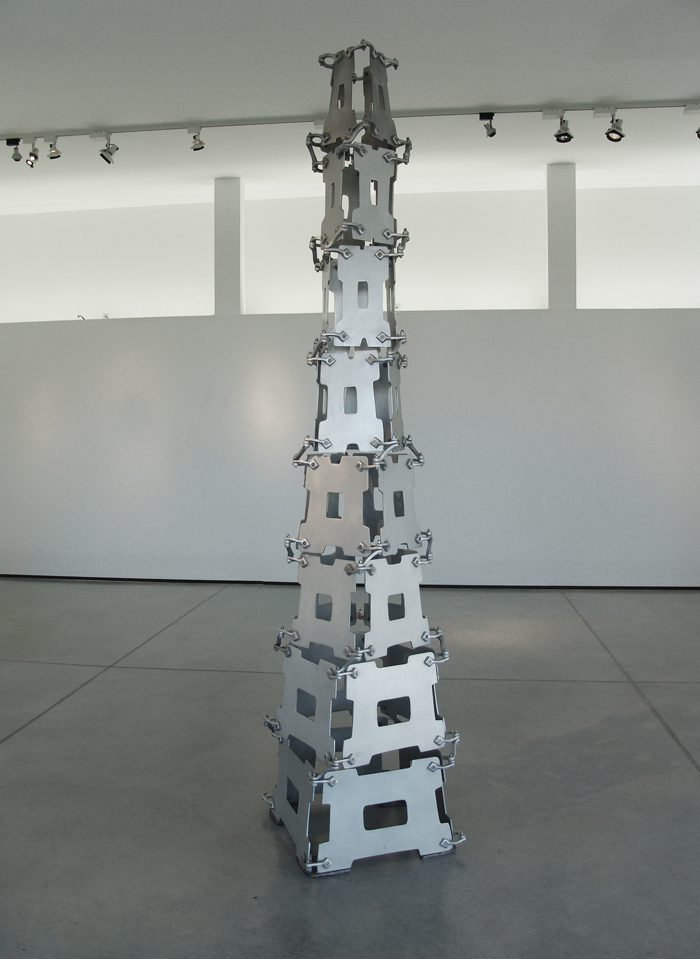 |
|
Torcionatta
Anodized aluminum casted in soil foundry and stainless steel
22 x 22 x 110 Inches 2008
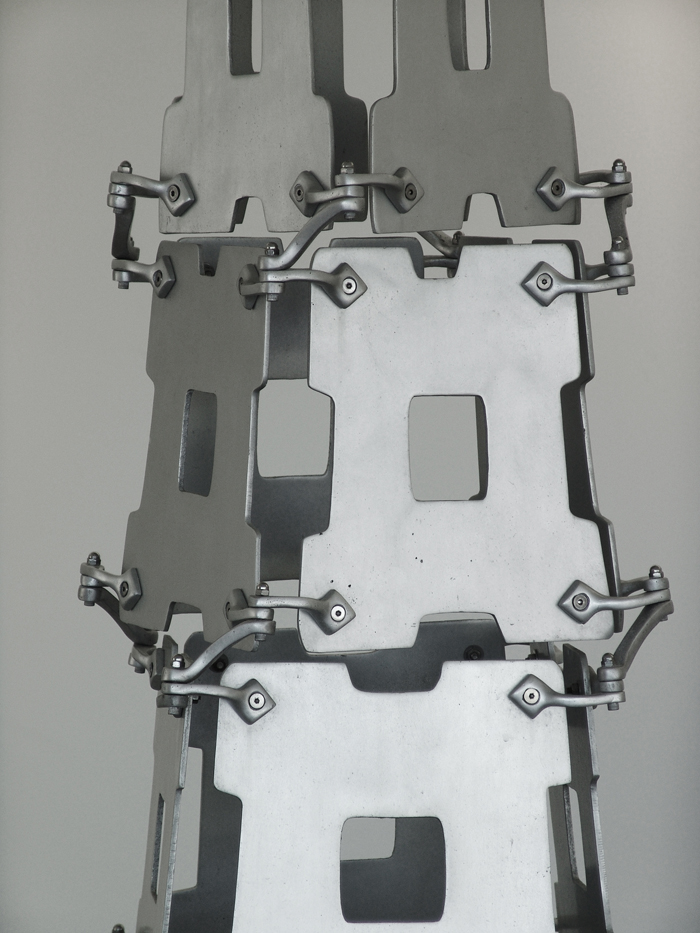 |
|
From
this point onwards I did nothing but think, I took long
walks on the beach and I thought; if the ideas were good, I
walked faster. Sometimes I got stuck in the sand and knew
that something would not work or that it would entail more
time and endless complications. When I got home I drew,
filling up notebook after notebook with ideas, possible
materials, with possibilities within possibilities.
Finally, I
chose the hard way. A unit made of small parts, a huge
puzzle; or rather a series of huge puzzles - crystallization,
fragmentation. I had seen this in Islamic art; kaleidoscopic
multiplication, perfect geometry where a succession of parts
erects the whole. But the minute modifications caused by
moving one part onto the next one multiplied, and what was
meant to be a straight line was now a helical curve. Nothing
was what it was supposed to be.
The transfer of objects from a virtual plane to the “real”
one (so to speak) has been constant in my work, i.e.,
generating something on the computer, materially building it,
and then scanning it and re-entering into the machine. This
way of working induces controlled errors, and the results
are often unexpected. The assemblage of a model for the
first time is a big event, as it is so difficult to foresee
how it will behave.
|
|
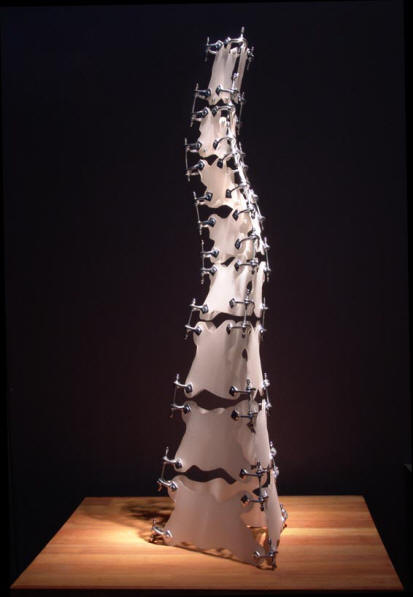 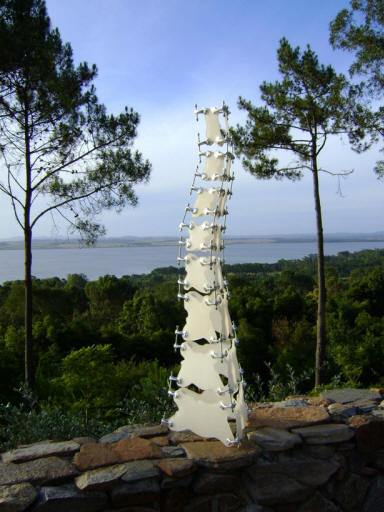
Sisalia Blanca
Acrylic aluminum and stainless steel 15 x 15 x 48 inches
|
|
After building
more than ten models based on different ideas, deciding
which one I was going to build first, was not at all easy.
The transition from the models to a larger scale implies
creating a system that will join and sustain the parts, and
generate unity.
After much wondering, I decided on the twisted towers, a
project that seemed more manageable, so I began this one
first. One of the most pleasant surprises this work gave me
was that once the setup finished I was able to correct the
curves, using an unplanned variation of the securement
systems. I used two wrenches and a ladder to force or soften
the preestablished curves. And again, another unexpected and
inexact element provided yet another shift in the project.
Many of the movements and musings that led me to all this
ended up providing the elements to finalize it. It was very
healthy to take a step back and observe the process. At a
certain point I felt the need to take distance from what was
built and ask myself what exactly happened here,
particularly because of the many fortuitous elements that
gave the impression of cold calculation.
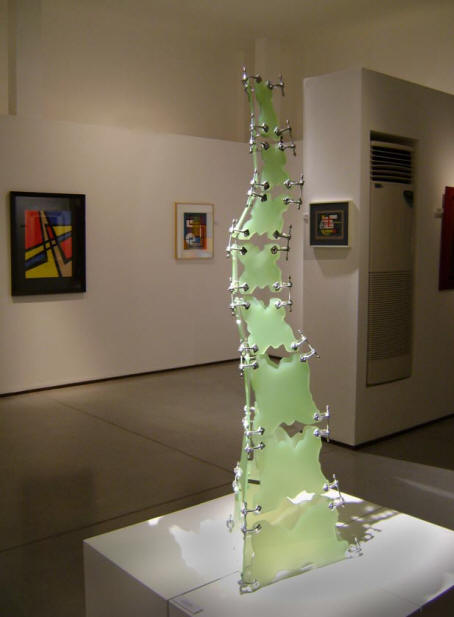
In the past
decade a great deal of computer and peripheral execution
software was developed that allow very precise calculations
and transfers to materials. This is a tremendous help for
large format projects. However, precision here seemed to be
a symbol of boredom. The plotter draws the same file many
times and the circle is always the same. But what happens if
we shake the plotter while it is drawing a perfect circle
and we repeat this circle after circle? They are not perfect
anymore. What happens if we scan these imperfect circles and
we reintroduce them into the computer? What appears to be
repetition is no longer, and what appears to be the same is
now different. This is where tension arises from
discrepancies, what should be straight is crooked, and what
should be perfect is perfect no longer.
|
|
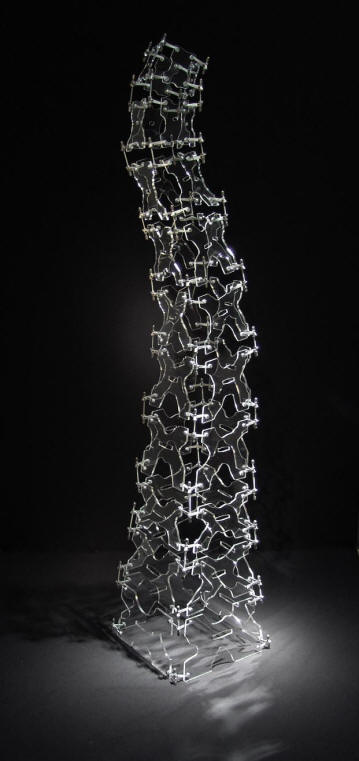 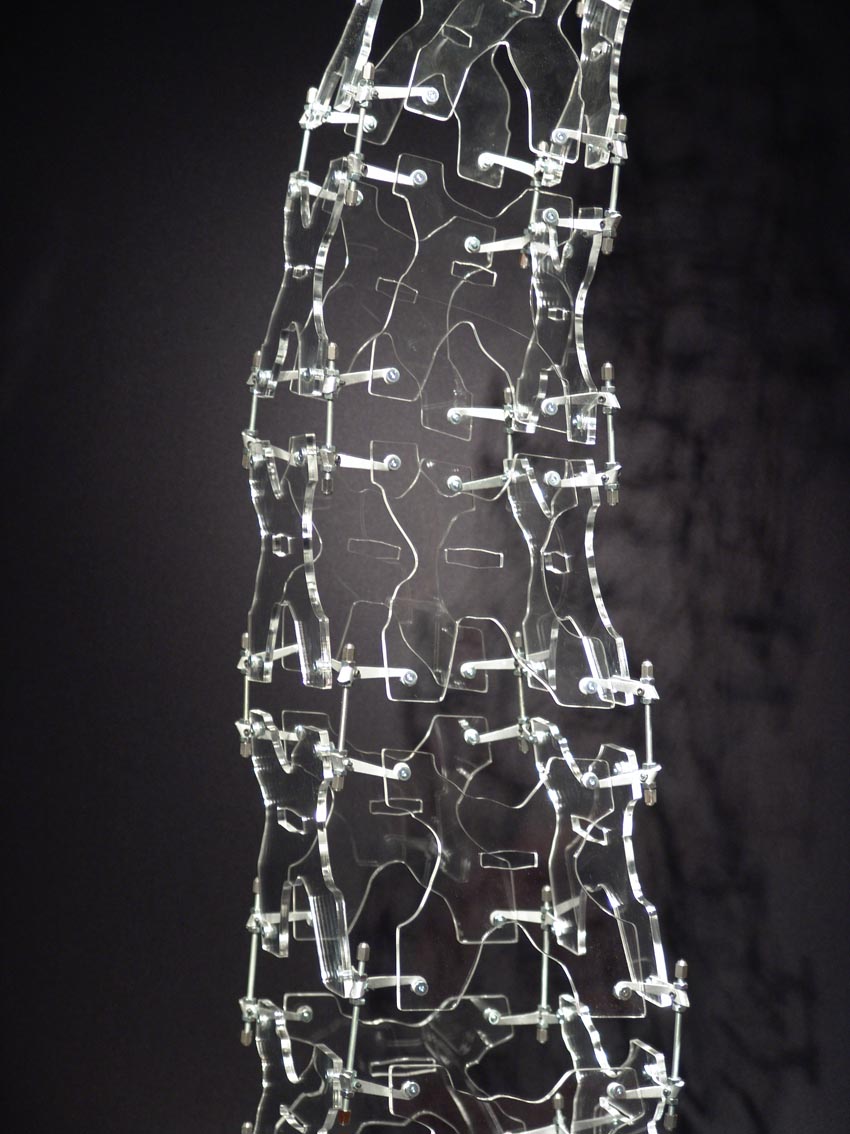
Esceo Acrylic
aluminum and stainless steel 15 x 15 x 68 inches |
I think both
projects led me to the same issue: to the deterioration of
things, to the inverted clock that marks birth in perfection,
and then finds no other way but to become corrupted and
deteriorated, maybe to reflect its surroundings. If things
are straight, we should know what happens when we bend them,
if the foundations are healthy, we should know what occurs
when we make them diseased.
It is nevertheless complicated to turn around, and once we
take one direction, we cannot turn back. Building,
destroying and rebuilding seems to be the fake feeling of
evolution that we carry with us. The idea that everything
will be perfected in the future, that knowledge will save us,
that we are on the road to becoming better beings is taking
us at a great speed towards what does not look like a good
destination. It may be otherwise, but only when the clock
completes its cycle and it all begins once again.
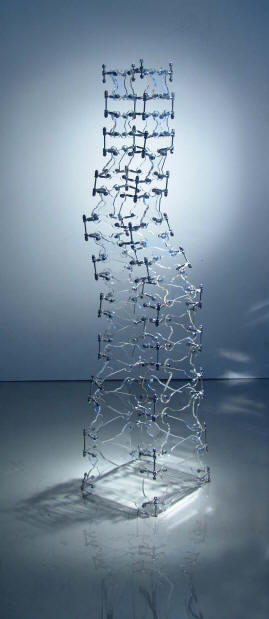 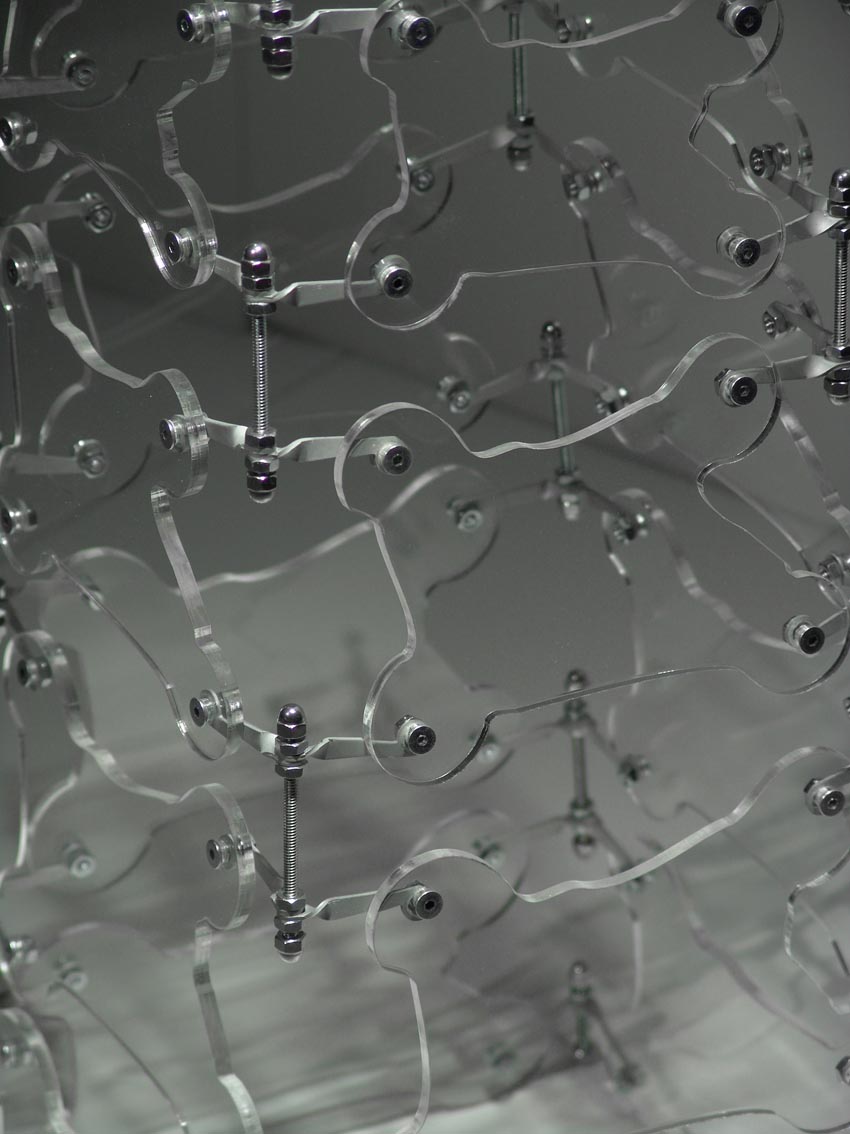
Zigurat
Acrylic aluminum and stainless steel 12 x 12 x 49 inches
|
|
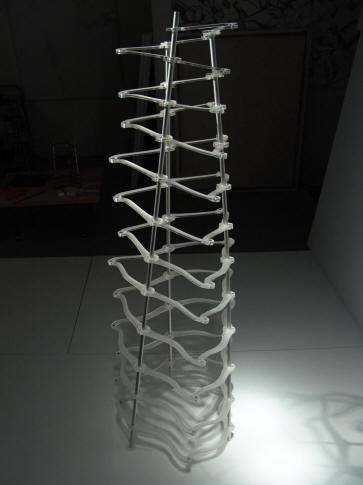 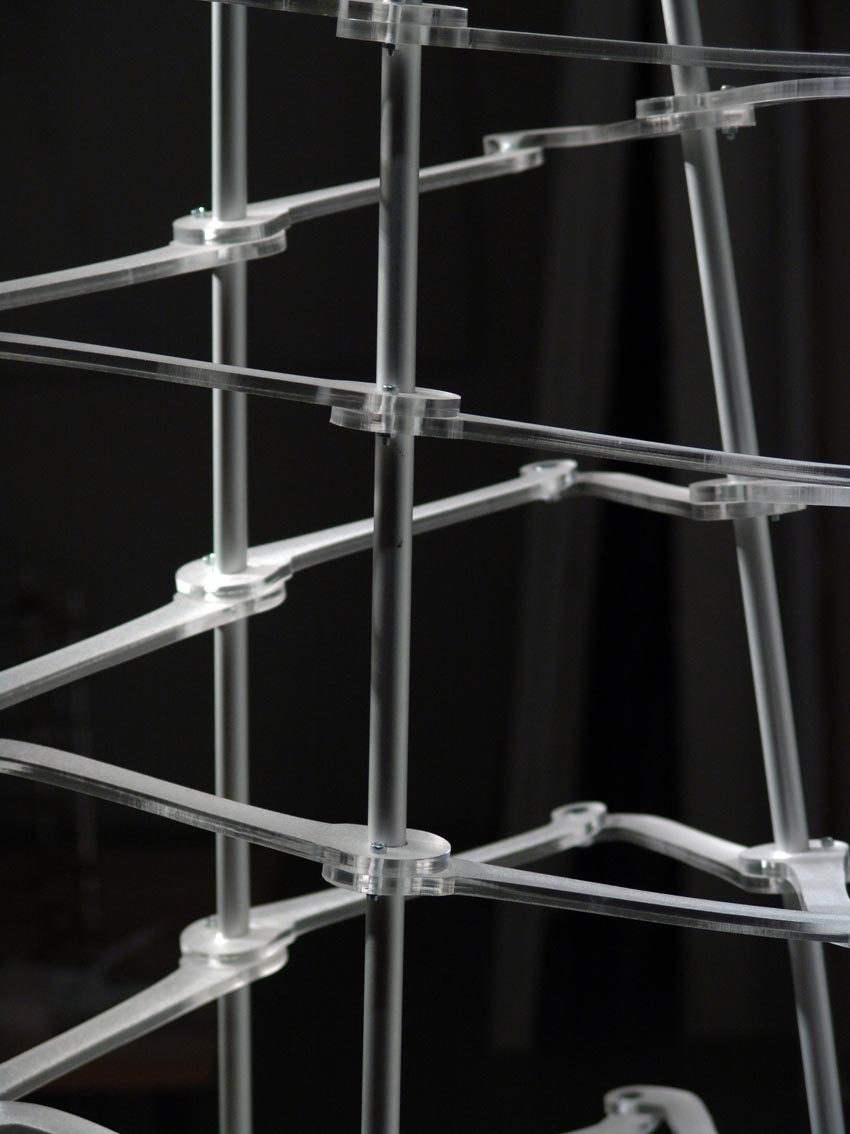
Siclo Acrylic
aluminum and stainless steel 22 x 22 x 72 inches |
|
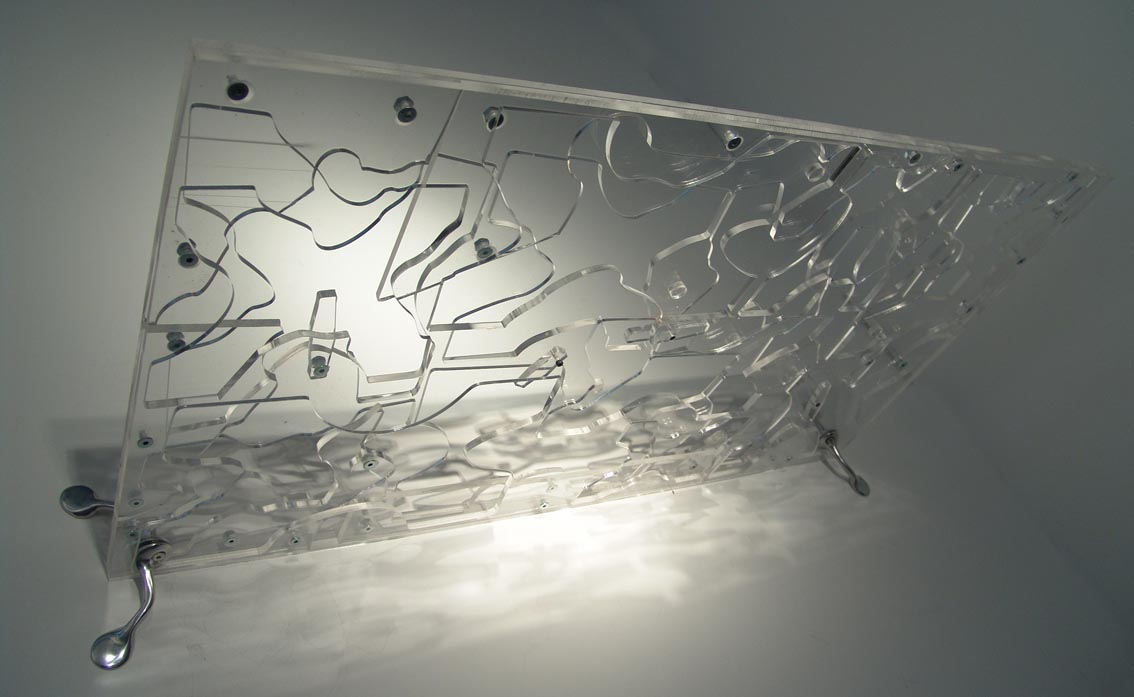
Muralo 2007
Acrylic aluminum and stainless steel 32 x18 x 6 inches
|
|
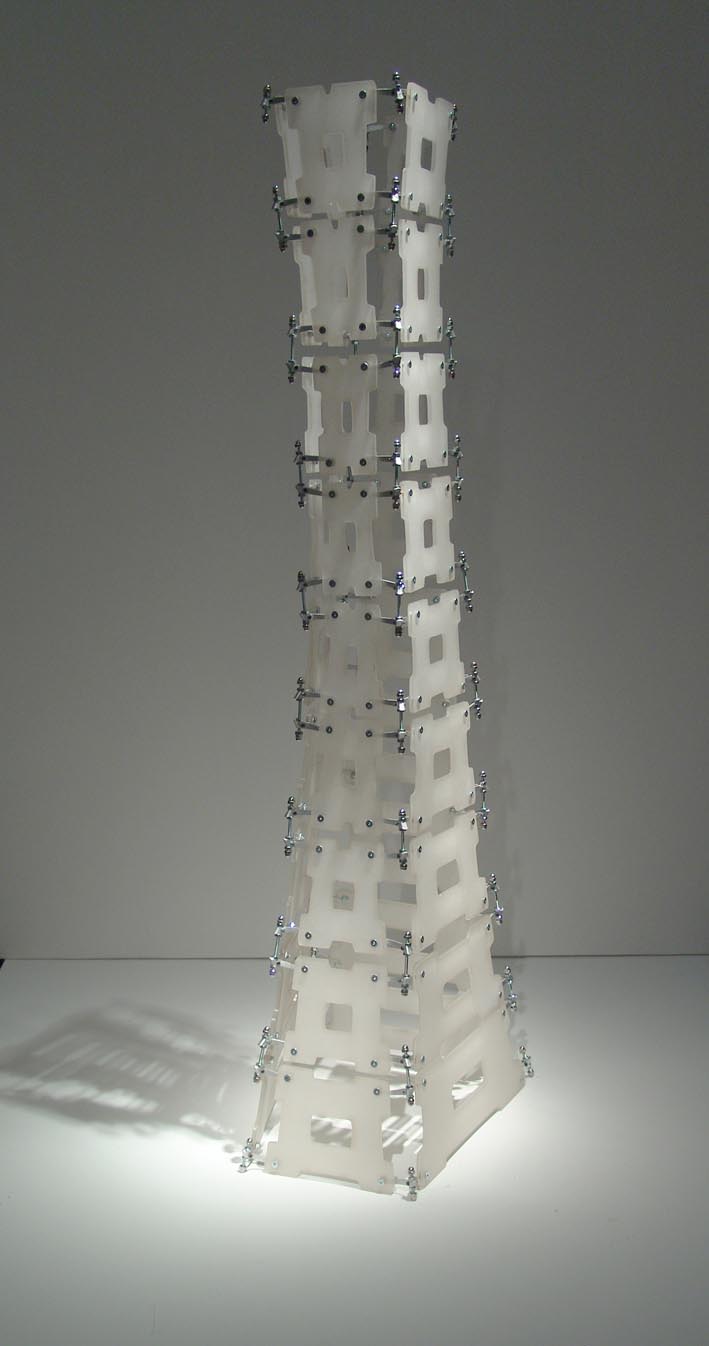
Droglet
Acrylic aluminum and stainless steel 10 x 15 x 54 inches
|
|